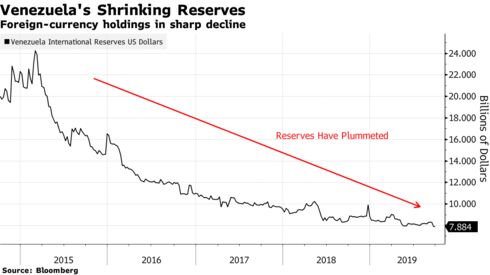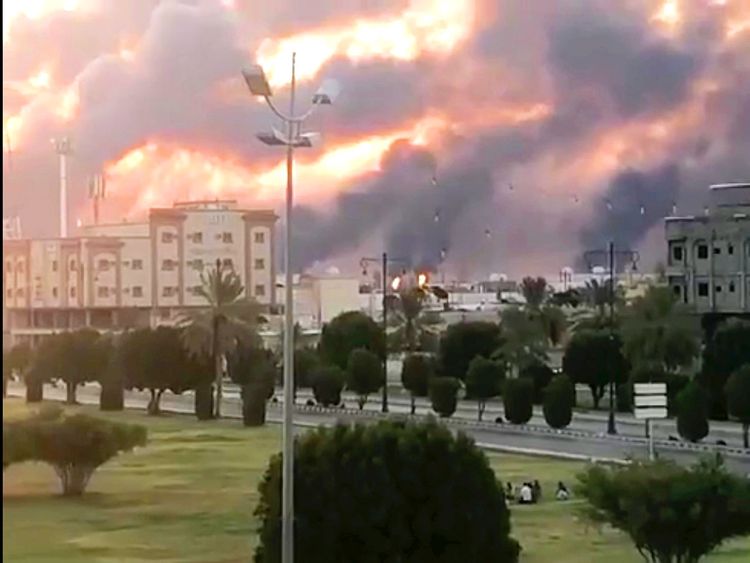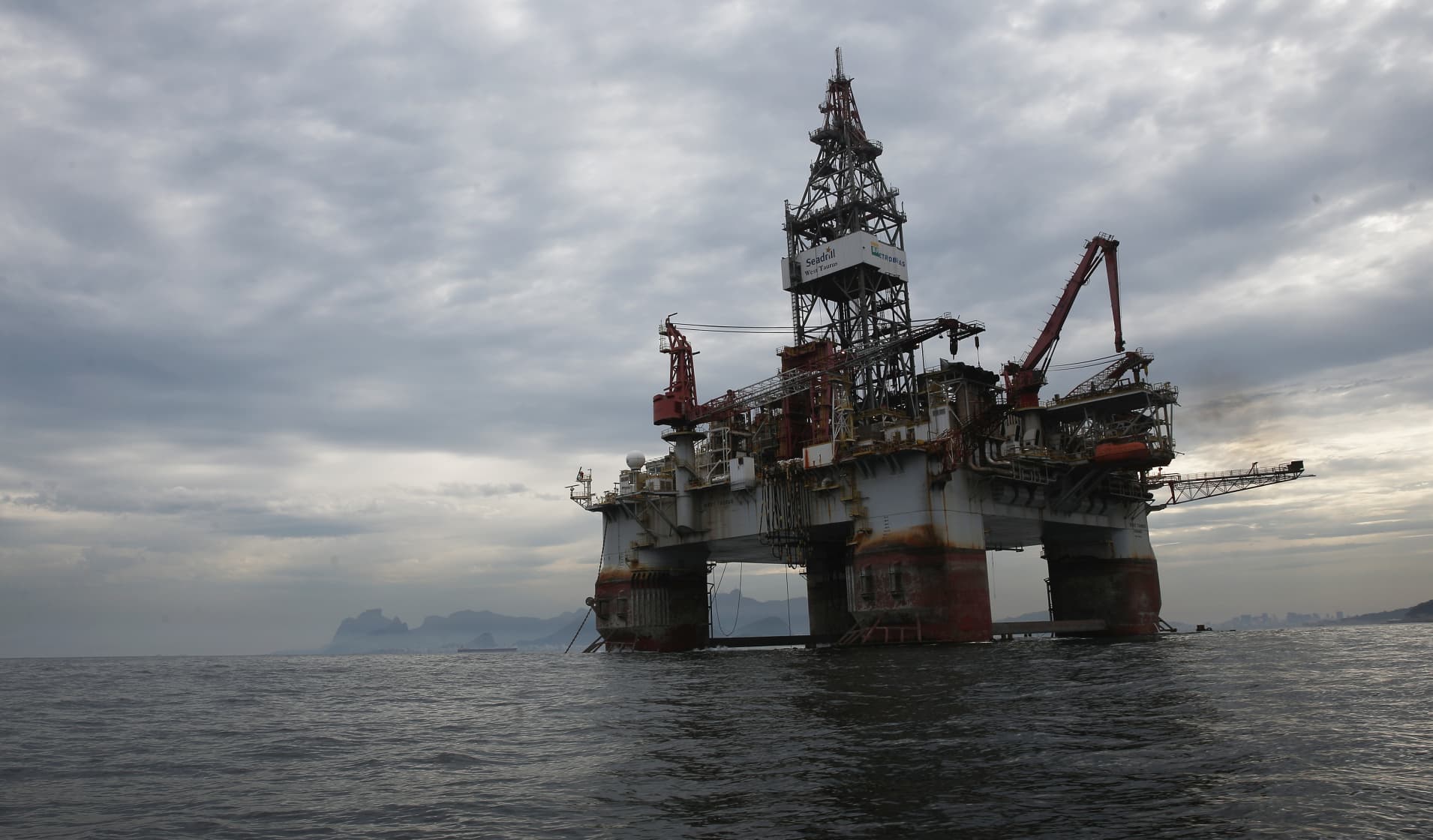 U.S. production gains from onshore oil-drilling rigs are declining fast, federal data show; a pump jack outside Williston, N.D.
Photo:
Daniel Acker/Bloomberg News
U.S. production gains from onshore oil-drilling rigs are declining fast, federal data show; a pump jack outside Williston, N.D.
Photo:
Daniel Acker/Bloomberg News
U.S. oil production grew less than 1% in early 2019 as operational issues weighed on shale companies
The American shale boom is slowing as innovation plateaus—and
just when shale’s importance in global markets has reached new highs
following an attack on the heart of Saudi Arabia’s oil infrastructure.
U.S.
oil production increased by less than 1% during the first six months of
the year, according to the Energy Department, down from nearly 7%
growth over the same period last year.
Unlike several years ago, when shale production fell due to a
global price collapse, the slowdown this year is driven partly by core
operational issues, including wells producing less than expected after being drilled too close to one another, and sweet spots running out sooner than anticipated.
The
challenges raise the prospect that the technological and engineering
advances that have allowed shale companies to unlock record amounts of
oil and gas from rock formations have begun to level off.
U.S.
oil production is on track to hit an average of 12.2 million barrels a
day this year, up from last year’s average of 11 million barrels a day,
the Energy Department said earlier this month. But because output grew
so quickly last year—from an average of 10 million barrels a day in
January to 12 million barrels a day in December—that implies limited
growth throughout 2019. Activity has slowed recently and employment has
fallen in some of the hottest U.S. oil regions, according to a September
report by the Dallas Federal Reserve.
“We’re getting closer to peak production and we are reaching the peak of the general physics of these wells,” said
James West,
a managing director at Investment bank Evercore ISI.
U.S.
shale oil production now accounts for about 8 million barrels a day, or
roughly 10% of oil world-wide, significantly boosting global supplies.
It has helped protect the U.S. and the world from geopolitical supply
shocks, such as this month’s attack on Saudi Arabian oil facilities, which crippled the world’s largest oil exporter.
Some
forecasters believe shale still has many years of growth ahead.
Consultant Rystad Energy estimates shale production will peak at roughly
14.5 million barrels a day in around 2030. The growth trajectory could
change due to factors such as higher prices and consolidation in the
shale sector.
One factor that could lead growth to continue is
the increasing shale footprint of major oil companies such as Exxon
Mobil Corp. and
Chevron
Corp.
They are now among the fastest-growing producers in the Permian
Basin of Texas and New Mexico, investing heavily in factory-style shale
production.
But growth also could slow if financial support from
Wall Street tightens further and oil prices continue to hover around $60
a barrel—factors that are leading many small and midsize shale producers to pull back
and emphasize profitability. That is making it more challenging for the
companies to drill new wells as rapidly as they did previously.
While
the attacks on Saudi facilities caused oil prices to spike this month,
even a sustained price increase would have a limited impact on shale
production because investors are demanding restraint, according to IHS Markit.
The consultant estimates U.S. shale production would grow by 480,000
barrels a day in 2020 at a price of $62 a barrel. A $10 price increase
would lift production by only 200,000 barrels a day, much slower
production growth than 2018.
The slower rate of new wells means companies will need to wring more
out of each well just to sustain current production, let alone increase
it. But a growing body of data indicates the production gains from
technological advances that many drillers have touted are leveling off,
and older shale fields may have less oil left than originally thought.
Gains
in oil production from U.S. onshore drilling rigs are declining
rapidly, federal data show. In December, drilling rigs helped extract
25% more oil than they had a year prior. In August, they were producing
about 14% more than last year, according to the Energy Information
Administration.
Meanwhile, production in the first 90 days of an
average shale well, its most productive period, declined by 10% in the
first half of the year compared to the 2018 average, according to
research by Raymond James.
In North Dakota, newer shale wells drilled by
Hess
Corp.
are producing less oil than their predecessors. The wells
initially were prolific. Hess wells that began producing this year in
North Dakota generated an average of about 19,600 barrels of oil each in
their first month, a company record for the region, according to data
from ShaleProfile, an industry analytics platform.
But as the
2019 wells aged, their average output eventually fell below that of the
company’s 2017 and 2018 wells. This year’s wells generated an average of
about 82,000 barrels of oil in their first five months, 12% below wells
that began producing in 2018 and 16% below 2017 wells.
A Hess
spokeswoman said the group of wells isn’t representative of the
company’s North Dakota inventory and noted that the company expects this year’s production to come in at the upper end of guidance.
Across
North Dakota’s Bakken Shale region, well productivity hasn’t improved
since late 2017, according to ShaleProfile research.
In other
mature shale regions, such as the Eagle Ford in South Texas, many
operators also have seen productivity per horizontal foot decline as
they have supersized their wells, according to ShaleProfile. That means
some are drilling bigger and often more expensive wells to recover a
similar amount of oil.
Among them is
EOG Resources
Inc.
Its wells that began producing in the second quarter of 2017 have
generated about 30 barrels of oil per horizontal foot on average, or
roughly 198,000 barrels of oil each, after two years.
That is
less per foot than EOG wells in the Eagle Ford that began producing in
the second quarter of 2016, when the company’s oil output per foot
peaked, ShaleProfile data show. Those wells, which were shorter, have
produced roughly 38 barrels of oil per horizontal foot on average after
two years, or about 194,000 barrels apiece.
EOG declined to comment.
Write to Christopher M. Matthews at christopher.matthews@wsj.com and Rebecca Elliott at rebecca.elliott@wsj.com




![Iran says seized Stena Impero 'free' to leave Stena Impero was seized by Iranian forces for alleged maritime violations [File: Tasnim News Agency/AP]](https://www.aljazeera.com/mritems/imagecache/mbdxxlarge/mritems/Images/2019/9/23/d421c7e48d5142bd8a35ee2559a2ff4b_18.jpg)







